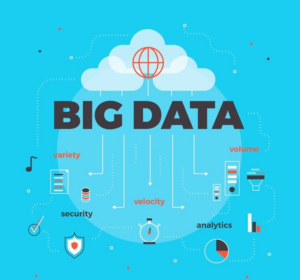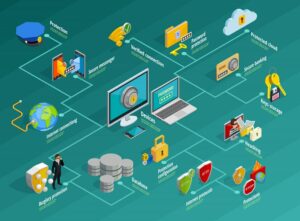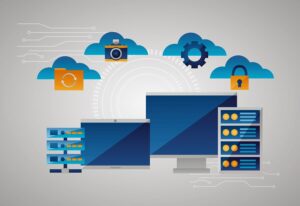 Data access software refers to tools, libraries, or frameworks that enable users to interact with, retrieve, manipulate, and manage data stored in various types of databases, file systems, or data repositories. Here’s an overview of data access software:
Data access software refers to tools, libraries, or frameworks that enable users to interact with, retrieve, manipulate, and manage data stored in various types of databases, file systems, or data repositories. Here’s an overview of data access software:
Purpose:
-
- The primary purpose of data access software is to facilitate efficient and seamless access to data stored in different data sources, such as relational databases, NoSQL databases, cloud storage, data lakes, file systems, and APIs.
- Data access software provides developers, analysts, and other users with the necessary tools and interfaces to query, retrieve, update, and manipulate data for analysis, reporting, application development, and decision-making purposes.
- Database Connectivity: Data access software supports connectivity to various types of databases and data sources, including relational databases (e.g., MySQL, PostgreSQL, SQL Server, Oracle), NoSQL databases (e.g., MongoDB, Cassandra, Redis), cloud databases (e.g., Amazon RDS, Azure SQL Database, Google Cloud SQL), and data lakes (e.g., Amazon S3, Azure Data Lake Storage).
- Querying and Retrieval: Data access software provides mechanisms for executing queries and retrieving data from databases using SQL (Structured Query Language), NoSQL query languages (e.g., MongoDB Query Language), or custom query APIs.
- Data Manipulation: Data access software allows users to insert, update, delete, and modify data in databases using appropriate data manipulation commands and APIs.Key Features:
- Transaction Management: Data access software supports transaction management features such as ACID (Atomicity, Consistency, Isolation, Durability) properties to ensure data integrity and consistency during database operations.
- ORM (Object-Relational Mapping): Some data access software includes ORM frameworks that facilitate mapping of database entities to object-oriented programming language constructs, simplifying data access and manipulation in application development.
- Connection Pooling: Data access software may incorporate connection pooling mechanisms to efficiently manage and reuse database connections, reducing overhead and improving performance in multi-user or high-volume environments.
- Security and Authentication: Data access software provides features for securing data access, implementing authentication, authorization, encryption, and access control mechanisms to protect sensitive data from unauthorized access or manipulation.
- Performance Optimization: Data access software includes optimization features such as query optimization, indexing, caching, and prefetching to improve data access performance and minimize latency in database interactions.
- Types of Data Access Software:
- Database Drivers and APIs: Database drivers and APIs provide low-level interfaces and libraries for connecting to specific databases and executing database operations programmatically.
- ORM Frameworks: ORM frameworks such as Hibernate (for Java), Entity Framework (for .NET), SQLAlchemy (for Python), and ActiveRecord (for Ruby) abstract database interactions and provide high-level object-oriented APIs for data access in application development.
- Data Access Libraries and SDKs: Data access libraries and software development kits (SDKs) offer pre-built components, functions, and utilities for accessing and working with data in various data sources, offering convenience and productivity in application development.
Data Integration Platforms: Data integration platforms such as Apache NiFi, Talend, and Informatica provide tools and workflows for accessing, transforming, and moving data between different data sources and systems in data integration and ETL (extract, transform, load) processes.
- Use Cases:
- Data access softwar
 e is used in various use cases and scenarios across industries and domains, including:
e is used in various use cases and scenarios across industries and domains, including: - Application development: Accessing and manipulating data in web, mobile, desktop, and enterprise applications.
- Business intelligence and analytics: Retrieving and analyzing data for reporting, dashboards, and data visualization.
- Data integration and ETL: Extracting, transforming, and loading data between different systems and repositories.
- Data science and machine learning: Accessing and preprocessing data for analysis, modeling, and machine learning tasks.
- IoT (Internet of Things) and sensor data
- processing: Collecting, storing, and analyzing data from sensors, devices, and IoT platforms.
- Cloud computing and big data: Accessing and processing data stored in cloud-based databases, data lakes, and big data platforms.
- Considerations:
- When selecting data access software, organizations should consider factors such as compatibility with existing systems and technologies, performance, scalability, security, ease of use, documentation, support, and licensing costs.
It’s important to choose data access software that meets the specific requirements and use cases of the organization, whether it’s for application development, data analysis, integration, or other purposes.
In summary, data access software plays a critical role in enabling users to interact with and retrieve data from various data sources, databases, and repositories, supporting a wide range of use cases in application development, analytics, integration, and decision-making processes.
Application Of Data Access Software:
- Data Integration and Connectivity: SAS experts help
 organizations integrate data from disparate sources, databases, and systems, including relational databases, data warehouses, cloud platforms, and streaming data sources.
organizations integrate data from disparate sources, databases, and systems, including relational databases, data warehouses, cloud platforms, and streaming data sources.
SAS software provides robust connectivity options and data integration capabilities to streamline data access and ensure data consistency and accuracy. - Data Retrieval and Querying: SAS experts assist organizations in retrieving and querying data efficiently from various data sources using SQL (Structured Query Language) queries, data manipulation languages, and advanced querying techniques.SAS software provides tools and utilities for data retrieval, filtering, aggregation, and transformation to support diverse analytical and reporting requirements.
- Data Virtualization and Federation: SAS experts leverage data virtualization and federation technologies to enable real-time access to distributed data sources without physically moving or replicating data.This enables organizations to access and query data in real-time across disparate data platforms, improving agility, scalability, and performance in data access and analysis.
- Data Governance and Security: SAS experts support organizations in implementing data governance and security measures to ensure data privacy, compliance, and integrity in data access processes.SAS software provides features for access control, authentication, encryption, and auditing to protect sensitive data and mitigate risks associated with unauthorized access or data breaches.
- Data Quality and Profiling: SAS experts help organizations assess and improve data quality through data profiling, cleansing, and enrichment processes.SAS software provides data quality tools and capabilities to identify data anomalies, inconsistencies, and errors, enabling organizations to maintain high-quality data for decision-making and analysis.
- Metadata Management and Cataloging: SAS experts assist organizations in managing metadata and cataloging data assets to facilitate data discovery, lineage tracking, and impact analysis.SAS software provides metadata management tools and capabilities to document data assets, define data relationships, and maintain a centralized repository of data definitions and usage.
- Self-Service Data Access: SAS experts enable self-service data access capabilities, empowering business users to access and analyze data independently using intuitive interfaces and self-service tools.This promotes data democratization and enables business users to derive insights and make data-driven decisions without relying on IT or technical support.
